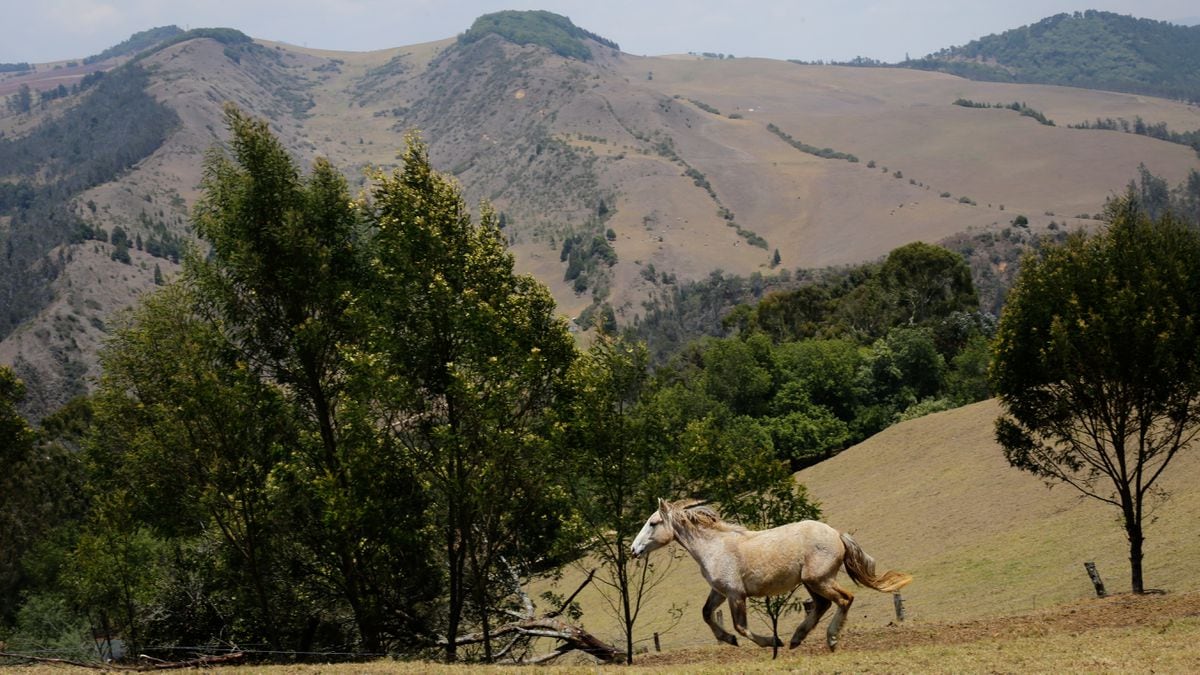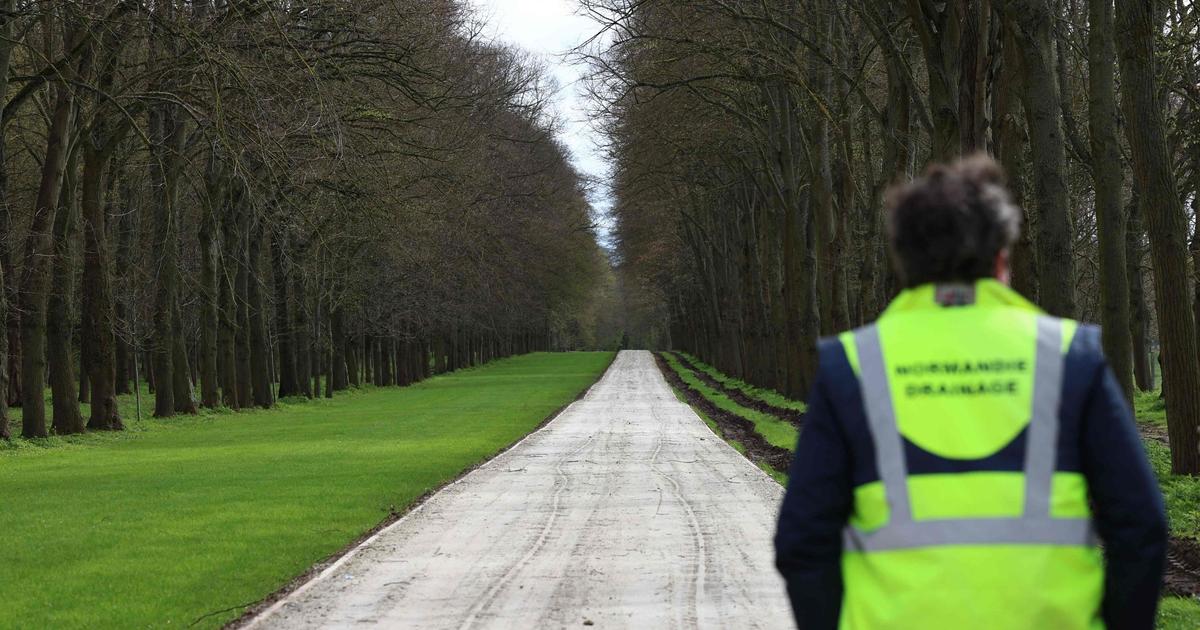All modern domestic horses can be traced back to ancestors 4,200 years ago.
(CNN) -
The domestication of horses changed the course of human history, but scientists have tried for years to figure out when and where this crucial event occurred.
Now, a new study based on DNA analysis suggests that horses were first domesticated 4,200 years ago in the steppes of the Black Sea region, part of present-day Russia, before spreading across Asia and Europe in subsequent centuries. .
It has been incredibly difficult to pin down when and where the domestication of horses occurred because this is a less obvious change than that seen in animals such as domestic cattle, which underwent a change in size.
Instead, the researchers had to work from indirect evidence, such as damage to teeth that suggested the use of bridles or even the symbolism of the horse in different cultures, said the study's lead author and palaeogeneticist Ludovic Orlando, director of research at the French National Center for Anthropobiology and Genomics of Toulouse for the University of Toulouse-Paul Sabatier in France.
The Vikings were in America exactly a thousand years ago
"Tracking human activity in the archaeological record is a difficult task, and even more so when it comes to reconstructing ancient relationships with horses, of which we often only have fragments, such as horse bones, for study," he said. study co-author William Taylor, Adjunct Professor and Curator of Archeology at the University of Colorado Museum of Natural History.
With this latest study, an international team of scientists collected and sequenced the genomes of the remains of 273 ancient horses found in Europe and Asia and compared them with the DNA of modern horses to determine their origin.
The study was published Wednesday in the journal Nature.
All modern domestic horses can be traced back to ancestors 4,200 years ago.
Critical window for horse domestication
Previous research suggested that the origin of horse domestication was in Botai, in what is now northern Kazakhstan, in Central Asia, because it provided the oldest archaeological evidence for these animals.
However, DNA told us a different story.
The Botai horses, which lived 5,500 years ago, could not be traced back to modern domestic horses.
Other possible places of origin in Anatolia, Siberia and the Iberian Peninsula also did not work.
advertising
Orlando and his team knew that the period between 4,000 and 6,000 years ago was a critical window to investigate when horses were domesticated due to the dating of ancient horse remains, "but irrefutable evidence could never be found," he said.
18,000 years ago, humans were already raising the most dangerous bird in the world, according to a study
The researchers broadened the search to get a more complete picture, studying the DNA of ancient horses that lived between 50,000 and 200 B.C. When they compared it to the DNA of modern domestic horses, the team was able to determine the time and place.
"The domestication of horses was a real turning point in human history and brought about incredible, widespread and lasting social transformations throughout the ancient world," says Taylor.
"Horses were ten times faster than many of the transportation systems in prehistoric Eurasia, allowing people to travel, communicate, trade, and raid distances that would have previously been unthinkable."
The expansion of domestic horses
According to the researchers, Eurasia was home to genetically distinct horse populations, but between 2000 and 2200 BC there was a radical change.
A population of horses of dominant genetics appeared in the Pontic-Caspian steppe of the North Caucasus, east of the Dnieper River, within the Don and Volga basins.
This area is now part of Russia.
This population of horses spread and replaced the groups of wild horses that roamed Eurasia in a matter of centuries.
"What our data shows is that, between 4,600 and 4,200 years ago, herders in the Don-Volga region found a way to increase the local reproductive group of horses," explains Orlando.
"That means they could breed more and more horses of this type generation after generation. They also selected horses with specific traits."
There was evidence of domestication in the horses' DNA, such as genes associated with more docile behavior, endurance, resilience to stress, and a stronger spine to support more weight.
All of them are related to horse riding in modern animals.
This horse jaw was excavated at the Ginnerup archaeological site, Denmark in June.
Horsemanship, as well as the invention of spoked-wheel war chariots, probably enabled these horses to replace other populations within 500 years, forever changing human mobility and warfare.
Horses can have facial expressions just like humans
"The reason we are so interested in horses is that they can probably be considered one of the most influential animals in human history," says Orlando.
"This close relationship that we have developed with this animal lasted until the beginning of the 20th century, when the engine was in charge of transport."
In the Mediterranean and Mesopotamia, horse-drawn carts probably spread through trade and military conquest because horses were so important as transport animals, Taylor said.
In places like Central and East Asia, horses also served a valuable role as livestock and traveled with migrating horse herders.
This image shows a farmer catching horses in north-central Kazakhstan.
Techniques for Tracing the Origins of Domestic Horses
Depending on the environments in which they lived, "the domestication of horses turned the steppes and grasslands of the world into cultural centers, population centers and centers of political power," says Taylor.
"In almost every place where they were introduced, from the steppes of Asia to the Great Plains or the Pampas of America, they reconfigured human societies almost immediately."
Horses run in the steppes of Inner Mongolia, China, in 2019.
Orlando and his team used innovative DNA techniques to differentiate this primitive horse population from many others.
Researchers want to understand the totality of how horses were domesticated, something that Orlando and his colleagues are focusing on through the Pegasus project.
This could also help them understand how domestic horses were introduced to North and South America.
"Although we now know where domestic horses came from, the entire process of their expansion around the world and their breeding history in the hundreds of different types we know today remains controversial," Orlando said.
"Furthermore, the horse was equally the animal of farmers, warriors and kings; they were found in rural and urban contexts alike, and in extremely diverse environments, from the coldest Siberian mountain range to the Nepalese mountains. We want to trace how these various contexts reshaped horse biology. "
AnthropologyHorses


/cloudfront-eu-central-1.images.arcpublishing.com/prisa/DXPUIGHRZZEKNMVHLDNKFJFAMY.jpg)





